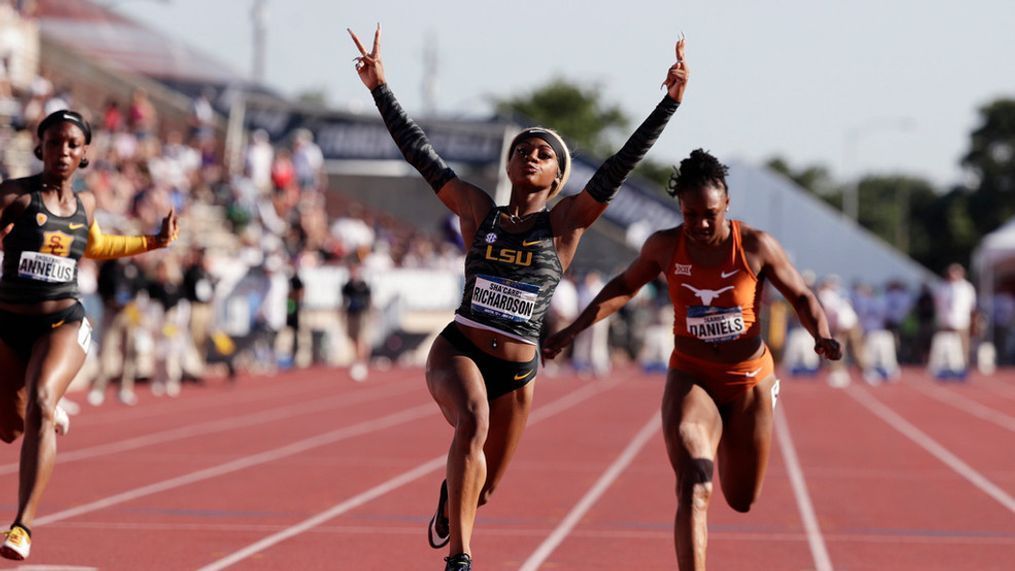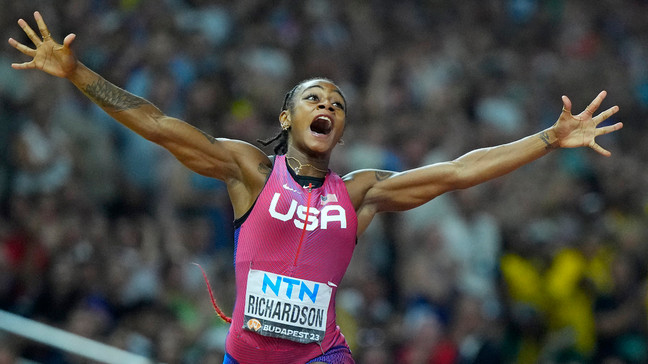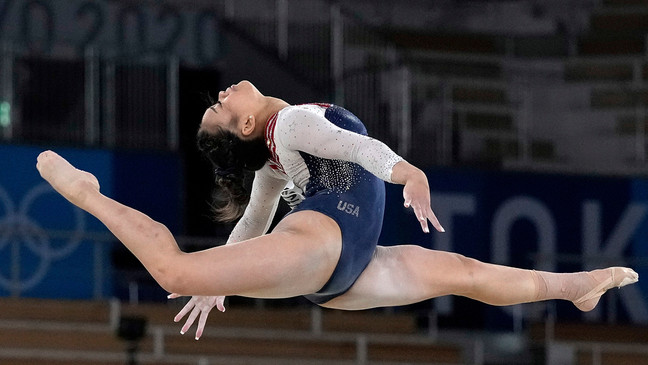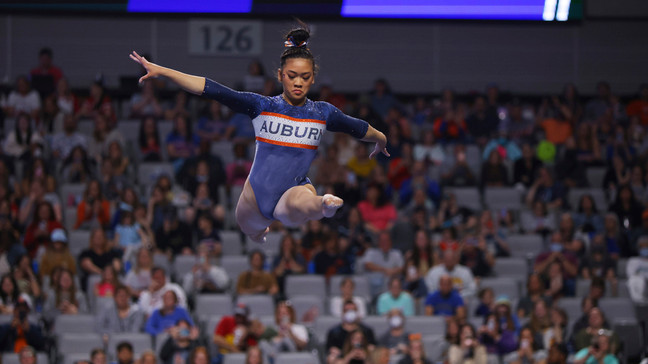Future of Olympic sports in US could hinge on fallout of NCAA athlete payouts, realignment
PARIS (AP) — Three-quarters of the nearly 600 American athletes lining up for action at the Paris Olympics honed their skills playing college sports in the United States.
It's an eye-opening figure that places the future of the Olympics themselves into the equation as the NCAA and its biggest schools set priorities when they start paying college athletes who for decades played only for scholarships.
"I think everybody's going to have to make choices," NCAA President Charlie Baker told The Associated Press in an interview a few hours before the opening ceremony. He planned to go to field hockey, volleyball, swimming and gymnastics while in Paris.
Baker's mere presence in Paris on the same day litigators filed details of a multibillion-dollar settlement that will alter the course of the NCAA speaks volumes about the important but seldom-discussed link between the biggest moneymakers in college — football and basketball — and the sports they underwrite. Many of those sports are being played over 17 days at the Summer Olympics.
According to the U.S. Olympic and Paralympic Committee, 21 U.S. teams competing in Paris have at least 80% college participation on their rosters. The 5-on-5 and 3x3 women's basketball squads are two of 15 teams that are completely formed with NCAA talent. Some of America's best-known Olympians — Sha'Carri Richardson, Steph Curry and Suni Lee, to name a few — competed in college.
The tendrils go beyond the U.S. team. More than 800 athletes with NCAA ties will compete for other countries in Paris. In all, more than 1 in 10 of the 10,500 athletes at these Games played college sports in the U.S.
If the U.S. approaches numbers from the last Summer Games, more than 80% of the medals it captures will be won by athletes with college experience.
None of this comes cheap. One estimate is that NCAA schools spend more than $5 billion a year on so-called nonrevenue, or Olympic, sports.
Most of their bills are paid out of what football and basketball produce. But, likely starting in 2025, the long-awaited flow of cash from schools in the NCAA's five biggest conferences to the players will begin in earnest as part of a revenue-sharing arrangement that came out of a trio of antitrust lawsuits against the NCAA.
According to the proposed arrangement, the schools could eventually reach close to a 50-50 split of their TV, ticket and sponsorship revenue with players. New TV deals, namely a $7.8 billion contract with ESPN to televise the football playoff, will certainly add money to the equation.
But the still-evolving mystery of what's left once the revenue-sharing deals are figured out will dictate how many Olympic, or nonrevenue, sports might be subject to the chopping block.
"It is extraordinarily top of mind to us," said Sarah Hirshland, the CEO of the USOPC, which has had working groups running for years trying to determine the contours of whatever comes out of the new arrangements. "We're going to keep a close eye on programs being cut, or even talked about being cut."
Four years ago, with the COVID-19 pandemic altering the financial picture in college sports, Stanford startled the Olympic world by announcing it would shutter nine Olympic sports programs at an athletic department that would have finished 11th in the medals standings all by itself at the 2016 Olympics.
A revolt ensued and the school ended up scuttling those plans. The mere thought of it delivered a chilling wake-up call — and a reminder of how integral college programs are to the Olympic ecosphere, especially in America, where government money does not underwrite training.
The changes coming out of the lawsuits do not consider a separate legal action that seeks to have players deemed as actual employees of universities, the cost of which could reach into the billions and wreak more havoc in the Olympic space.
Also, Baker himself has floated the idea of having schools in bigger conferences put $30,000 in each eligible athlete's "educational trust fund" as another way of directing more money toward players.
With these proposals swirling earlier this year, Alabama athletic director Greg Byrne said he expected players' salaries to come with an eight-figure price tag "and those are resources and revenues that don't exist."
"And so, the impact that could have on the Olympic sports, on the number of sports you are able to offer, the level of it — I've heard colleagues say, 'Well, we're just going to scale back what we offer,'" he said.
Hirshland and those at the USOPC office are holding out hope it won't come to that.
"We're going to do everything we can to contribute to saving that system because it works beautifully for us and, frankly, it's the envy of the world," she said.
Speaking to the AP, Baker sounded an optimistic note when he mentioned there are many schools "that build a ton of brand" around Olympic sports because they mean a lot to alumni and the college community. He also said some schools that haven't been players in the Olympic-sport system might "decide this is where their opportunity is going to be going forward."
But he's not making any guarantees, and says there was no way to avoid the bigger issue, which is paying the football and basketball players whose efforts pay for the rest of the sports.
"There are a lot of open-ended questions going forward on this one," Baker said.
_____



